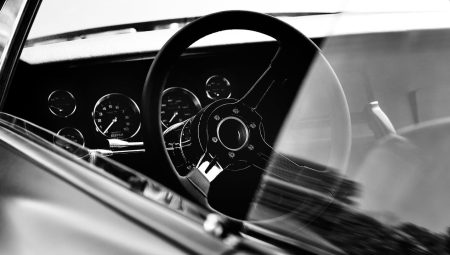Maintaining your engine mounts is not just about preventing annoying vibrations; it’s about ensuring your entire vehicle runs smoothly and safely. Think of engine mounts as the unsung heroes of your car’s performance, quietly absorbing shocks and keeping everything in place. Neglecting them can lead to serious issues down the road, like engine misalignment or even costly repairs. So, how do you keep these vital components in top shape? Regular inspections and timely replacements are key. By understanding their role and recognizing the signs of wear, you can take proactive steps to extend their lifespan and enhance your vehicle’s performance.
Remember, a little attention goes a long way! Just like you wouldn’t ignore a warning light on your dashboard, you shouldn’t overlook your engine mounts. They are crucial for the stability and safety of your ride. So, buckle up and get ready to dive into some essential maintenance tips that will keep your engine mounts—and your vehicle—running like new!
Understanding Engine Mounts
Engine mounts are vital components that serve as the bridge between your vehicle’s engine and its chassis. Think of them as the unsung heroes of your car; they absorb vibrations, support the engine’s weight, and help maintain its position. Without these mounts, your engine would be bouncing around like a basketball in a gym, leading to potential damage and a chaotic driving experience.
There are several types of engine mounts, including rubber mounts, hydraulic mounts, and solid mounts. Each type has its own unique advantages:
- Rubber mounts are common and provide excellent vibration dampening.
- Hydraulic mounts use fluid to absorb shock, offering a smoother ride.
- Solid mounts are designed for high-performance vehicles, providing maximum stability.
Understanding the function and types of engine mounts is crucial for maintaining vehicle stability and performance. When these mounts fail, you may experience increased vibrations, misalignment, and even engine damage. Therefore, keeping an eye on their condition is not just smart; it’s essential for a safe and enjoyable ride.
Signs of Worn Engine Mounts
Recognizing the is crucial for maintaining your vehicle’s performance and safety. These mounts are like the unsung heroes of your engine, absorbing vibrations and keeping everything in place. When they start to wear out, you might notice a few telltale signs. For instance, if you feel excessive vibrations while driving, it could indicate that your mounts are failing to do their job effectively. Additionally, listen for any unusual noises, such as clunking or banging sounds, especially when shifting gears or accelerating.
Another red flag is if your engine seems to be sitting lower than usual or if you can see visible cracks or breaks in the mounts themselves. Over time, these issues can lead to more severe problems, such as misalignment of the engine, which can cause further damage. To help you keep track, here’s a quick summary of the common signs:
- Excessive vibrations felt in the cabin
- Unusual noises during acceleration or shifting
- Visible cracks or breaks in the mounts
- Engine appears to be lower than normal
By staying vigilant and addressing these symptoms early, you can prevent costly repairs and ensure your vehicle remains safe and reliable. Remember, just like a good foundation supports a house, healthy engine mounts support your engine!
Routine Inspection Practices
Maintaining your engine mounts is crucial for the overall health of your vehicle. Regular inspections can help you catch issues early, preventing costly repairs down the line. So, how do you go about inspecting these vital components? First, start by visually checking for any signs of wear or damage. Look for cracks, tears, or excessive rust. If you notice any of these, it’s time to consider a replacement.
Next, perform a simple test by pushing down on the engine while the vehicle is parked. If you see significant movement or hear unusual noises, your mounts may be failing. It’s also wise to check for any fluid leaks around the mounts, as this can indicate a problem.
As a general rule of thumb, aim to inspect your engine mounts every 6 months or during routine maintenance checks. Keeping a close eye on these components can enhance your vehicle’s stability and ensure a smoother ride. Remember, a little attention goes a long way in prolonging the life of your engine mounts!
Replacement Procedures
Knowing when and how to replace engine mounts can save you both time and money, ensuring your vehicle runs smoothly. First, gather the necessary tools: a socket set, torque wrench, and a jack. Don’t forget safety gear like gloves and goggles!
Start by lifting the vehicle securely with a jack and placing jack stands underneath for safety. Then, inspect the engine mounts for any visible signs of wear or damage, such as cracks or excessive movement. If you notice these issues, it’s time for a replacement.
Next, remove the old mounts. Loosen the bolts with your socket set, but be cautious—some mounts may require additional support to prevent the engine from dropping. Once the old mounts are out, align the new mounts in place and tighten the bolts according to the manufacturer’s specifications. Always use a torque wrench to ensure everything is snug and secure.
Finally, lower the vehicle and take it for a test drive. Listen for any unusual noises and feel for vibrations. If everything feels right, congratulations! You’ve successfully replaced your engine mounts. Regular maintenance and timely replacements will keep your vehicle safe and enhance its performance.
Preventive Maintenance Strategies
Keeping your engine mounts in top shape is like giving your vehicle a strong backbone. Regular preventive maintenance can significantly extend their lifespan and save you from unexpected repairs. Start with routine cleaning; dirt and debris can accumulate, leading to wear and tear. A simple wash can work wonders!
Another essential strategy is to monitor driving habits. Aggressive driving can put excessive stress on your engine mounts. Try to drive smoothly—think of it as treating your car to a gentle massage rather than a rollercoaster ride. Additionally, consider scheduling regular inspections, ideally every 6 months, to catch any issues early. This proactive approach can help you spot potential problems before they escalate.
Finally, ensure that your engine is properly aligned. Misalignment can cause undue strain on mounts, leading to premature failure. If you notice any unusual vibrations or noises, it might be time to check your alignment. By following these strategies, you not only enhance vehicle safety but also enjoy a smoother ride.
Frequently Asked Questions
- What are engine mounts and why are they important?
Engine mounts are crucial components that secure the engine to your vehicle’s chassis. They help absorb vibrations and maintain stability, ensuring smooth performance and safety on the road.
- How can I tell if my engine mounts are worn?
Common signs of worn engine mounts include excessive vibration, engine movement during acceleration, and unusual noises. If you notice any of these symptoms, it’s time to inspect your mounts!
- How often should I inspect my engine mounts?
It’s a good idea to inspect your engine mounts at least once a year or during routine maintenance checks. Regular inspections can help catch issues early and save you from costly repairs.
- Can I replace engine mounts myself?
Yes, you can replace engine mounts yourself if you have the right tools and experience. Just be sure to follow safety precautions and consult a guide for step-by-step instructions.
- What preventive maintenance can I do for my engine mounts?
To prolong the life of your engine mounts, regularly clean them, avoid excessive stress, and keep an eye on your vehicle’s overall condition. A little care goes a long way!





